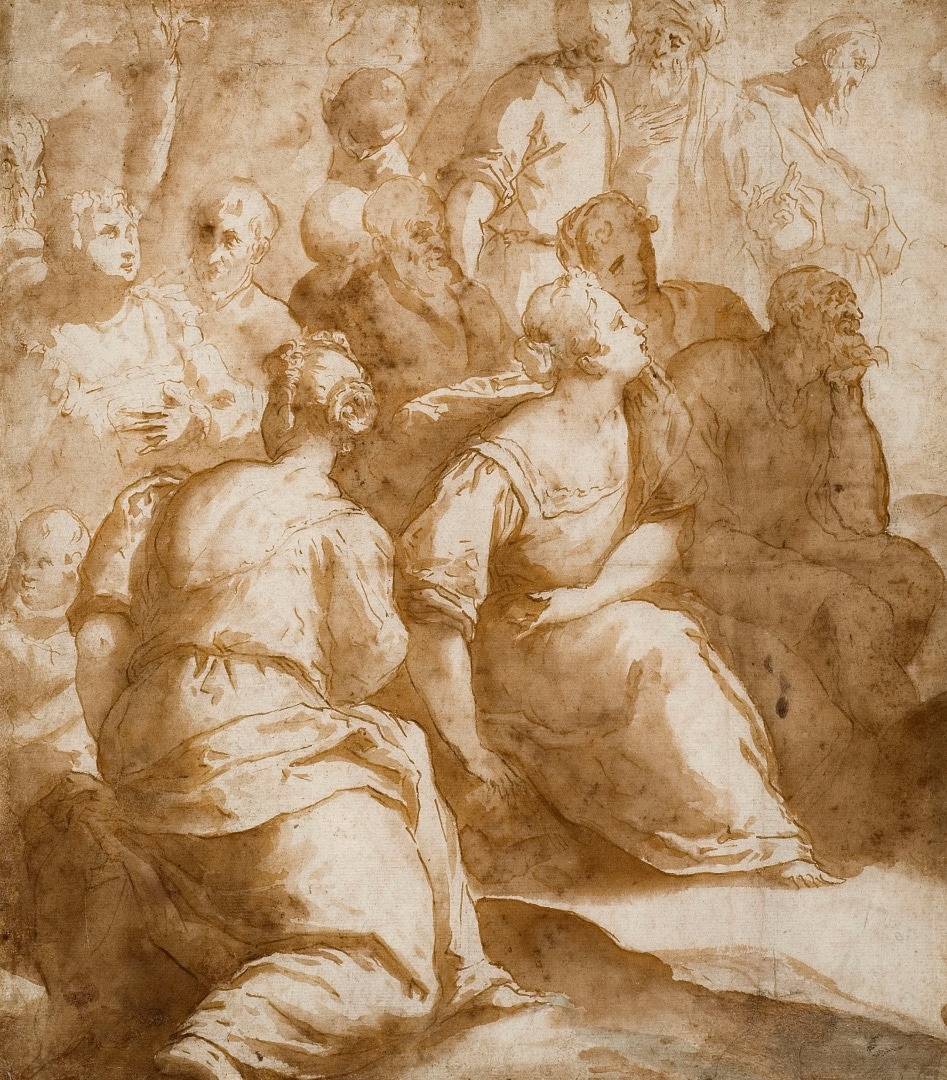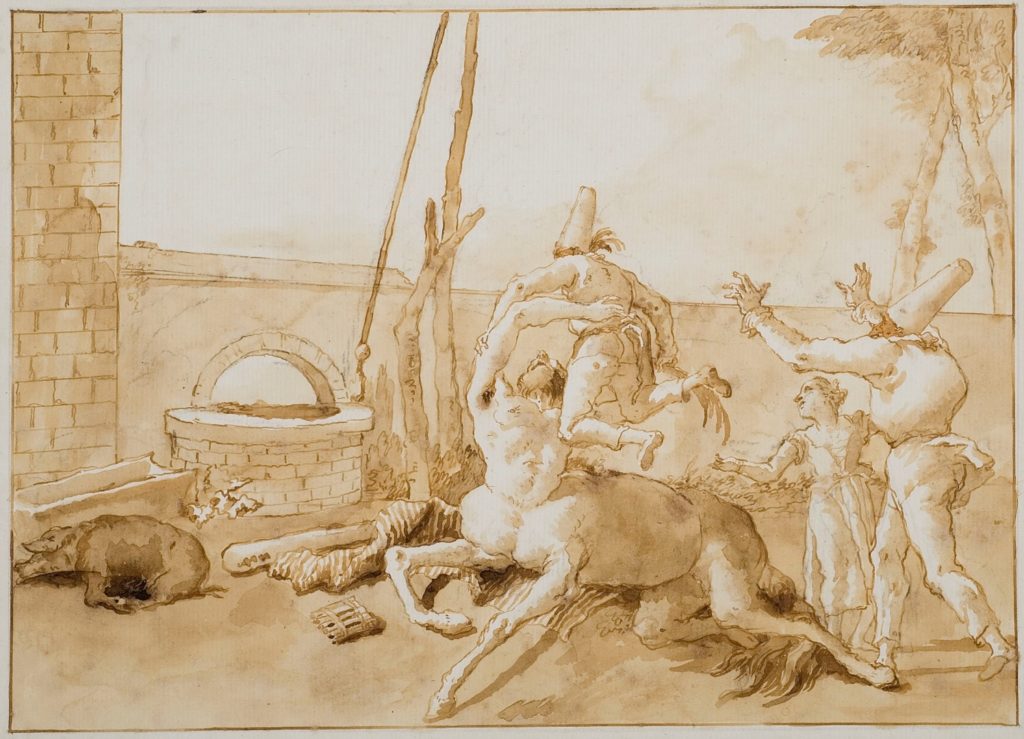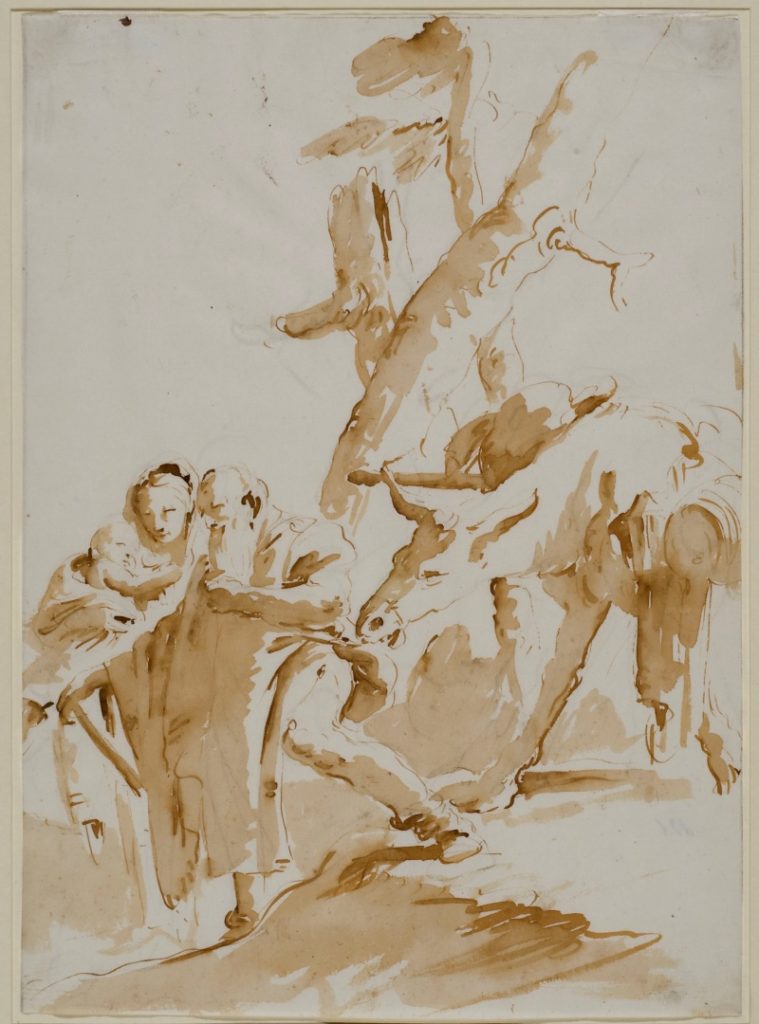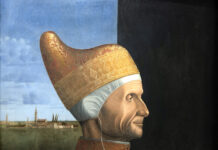
A California museum has brought together a must-see selection of master drawings by two of 18th-century Italy’s most famous father/son artists: Giambattista and Domenico Tiepolo. The show offers viewers an engaging experience of luminous compositions, as the Tiepolos’ splendid drawings — and the works of other Venetian artists — provide a unique view into the distinctive art of the lagoon city.
On view now through February 4 at the Crocker Art Museum in Sacramento, “Masters of Venice” is a tantalizing experience for any fine art lover. The show provides new insight into two of Venice’s most important artists through a fantastic selection of drawings. According to the museum, “Eighteenth-century Venice was not only home to a lively community of artists and the finest publishing and printmaking industry in Europe, but its unique architecture and traditions also made it a cultural destination for artists, aristocrats, and royalty.

“Giambattista Tiepolo (1696-1770) and his son Domenico (1727-1804) were the most renowned Venetian artists during this period, with patrons across Italy and Europe. In 2010, Indiana businessman and philanthropist Anthony J. Moravec donated a collection of drawings by the Tiepolos to Indiana University’s Sidney and Lois Eskenazi Museum of Art in Bloomington, expanding its Tiepolo holding to make it the third largest in the nation.


“The centerpiece of the exhibition is a group of 12 drawings from Domenico Tiepolo’s New Testament cycle, from what is believed to be the largest such cycle produced by a single artist. These large, ink and wash drawings are not studies for other works, but rather unique designs that showcased the artist’s deep understanding of the religious subject matter and his careful observation of the world around him. While most of the events from the New Testament are familiar, others are more rarely depicted, yet even in the most iconic scenes, Domenico brings out the humanity of the story.”
To learn more, visit the Crocker Art Museum.
This article was featured in Fine Art Today, a weekly e-newsletter from Fine Art Connoisseur magazine. Click here to start receiving Fine Art Today for free.







